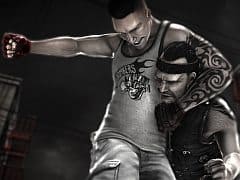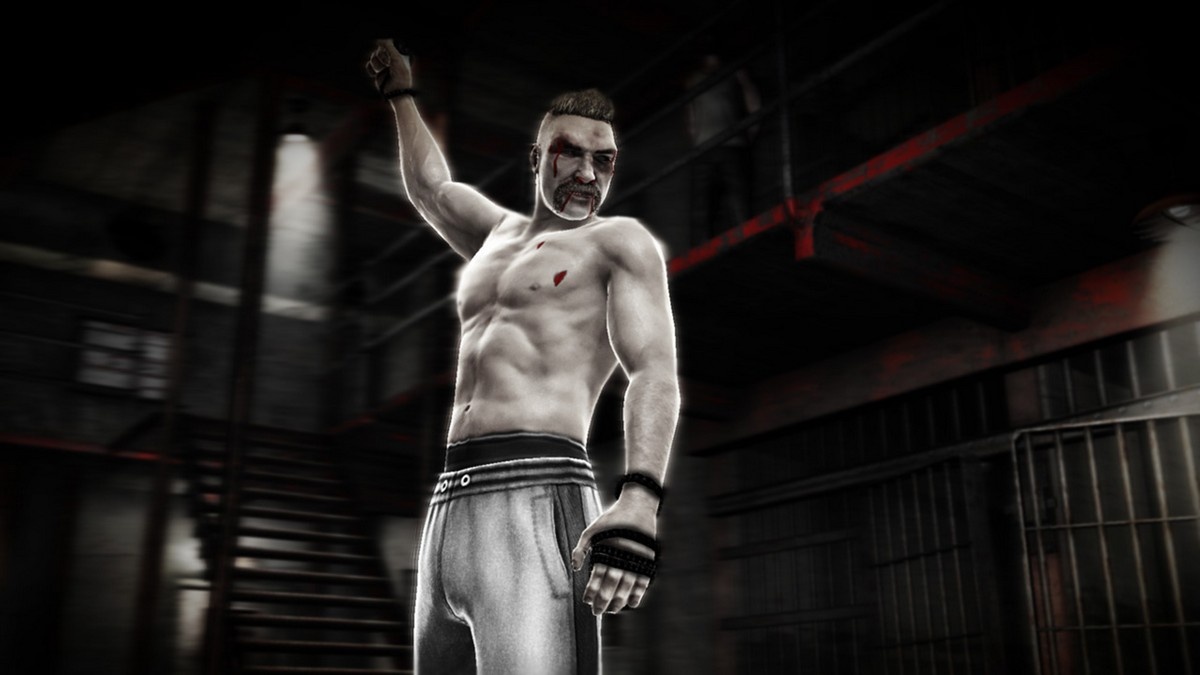You can trust VideoGamer. Our team of gaming experts spend hours testing and reviewing the latest games, to ensure you're reading the most comprehensive guide possible. Rest assured, all imagery and advice is unique and original. Check out how we test and review games here
The phrase “lights out” is most commonly associated with two things: soldiers going to bed, and people being punched in the face. In case there’s any confusion on the matter, today we’re discussing a game that deals with the latter. Your first clue should have been the prefix, “The Fight,” in the title; if that didn’t tip you off, the screenshots of men punching each other in the face should have been a dead giveaway. Maybe one day someone will make a motion-sense game about soldiers going to bed – but that day ain’t today, friend.
Until the release of Sleepy Sergeant Bedtime: Lights Out, we’re going to have to make do with The Fight – a gritty, bare-knuckle boxing Move game from Coldwood Interactive. Unlike most of the launch titles that are accompanying Sony’s new toy, The Fight isn’t being sold to us as “fun for all the family”. Instead it’s being marketed as a hardcore title – and that makes it an important release for anyone who’s hoping that Move will offer us more than mini-games and 360 degree waggling.
Just as Sports Champions- borrows heavily from the Table Tennis section of Wii Sports Resort, The Fight roughly pins Wii Sports’ Boxing against the wall and then snatches away its basic setup with great big burly hands. You stand in front of your TV, a Move controller in each of your clenched fists, and then swing away at your on-screen rival. It’s a far darker game – both tonally, and in the sense that in place of colourful Miis are monochrome, Sin City-style bruisers – but when you first start slugging, there’s an undeniable sense of similarity.
To its credit, The Fight is clearly trying to expand upon Nintendo’s fun-but-basic template. For starters, Move’s superior sensing abilities allow for a far more responsive experience, enabling you to throw virtual jabs, hooks and uppercuts that feel impressively close to your real-world movements. As with the Start the Party mini-games that require you to punch ‘into’ the screen, I initially found it quite tricky to accurately place my clumsy blows. Perhaps I’ve been molly-coddled by less demanding control schemes, or maybe I’m just a mal-coordinated ape (let’s not dwell on this question, please); either way, I suspect that things will improves with a bit of practice.
Along with its fine-tuned fisticuffs, The Fight ups the ante by allowing players to move about during a scrap. The PlayStation Eye tracks your head movements, allowing you to bob and weave, and by tilting both of your controllers in the same direction, you can circle your opponent. Once you’ve got the hang of all that, there’s a smattering of special moves that you can learn after beating “boss” characters. These make use of gesture commands rather than exact replica movements: to do a hammer blow you hold the action button and perform a downward swipe, while the headbutt requires you to extend both arms, press the two action buttons, and swiftly bring both controllers inwards at the same time; shouting drunken abuse is optional, but will probably add to the verisimilitude.
In short, there’s rather a lot to remember. The early moments of my gamescom test-bout largely consisted of me flailing and waving my arms about – which, to be honest, is probably what would happen if you dumped me into a real illegal boxing match. When one of my fists did successfully connect with the Bruce Lee lookalike I was fighting, his reaction felt gratifyingly real and physical. The look of the game is spot on too, from the seedy backdrop of a disused church, to the evil-looking tatts that stretched across my opponent’s torso. The black and white visual style, interrupted by the occasional splash of red, is another smart choice, lending the game a certain coldness that perfectly fits with the subject matter.
My only slight concern with The Fight is that it felt a bit unwieldy – but at this stage, having only played a single match for myself, it would be deeply unfair to judge the controls. To an extent it would be concerning if the action was too straightforward at this point; the game is supposed to be about your development as a fighter, starting you out as an amateur ASBO kid and then knocking you about until you turn into Tyler Durden. If the brawling was a cakewalk from the outset, there wouldn’t be much progression throughout the rest of the game, right?
Perhaps. Obvious though it may be to say it, but The Fight will live or die on the strength of its controls, and how well they translate into long-term entertainment. The overall structure of the game isn’t completely clear yet, but between fights you’ll be able to work on your techniques with your trainer – earning credits in the process that can be used to boost your raw statistics. Wonderfully, your trainer is played by none other than Danny Trejo – a familiar (and rather scary) face for anyone who’s seen From Dusk Till Dawn, Con Air or any of the other films that required a tough-looking bloke with facial scars and a big moustache. The developers haven’t just picked him for his grizzly looks, either: before turning to acting, Trejo was a prison boxing champ. If anyone can whip us into bare-knuckle form, it’ll be him – let’s just hope that The Fight has a similarly talented mentor in its own corner.
The Fight: Lights Out is due for release on Move for PlayStation 3 in October.

/https://oimg.videogamer.com/images/a5bb/motion_fighter_18.jpg)






